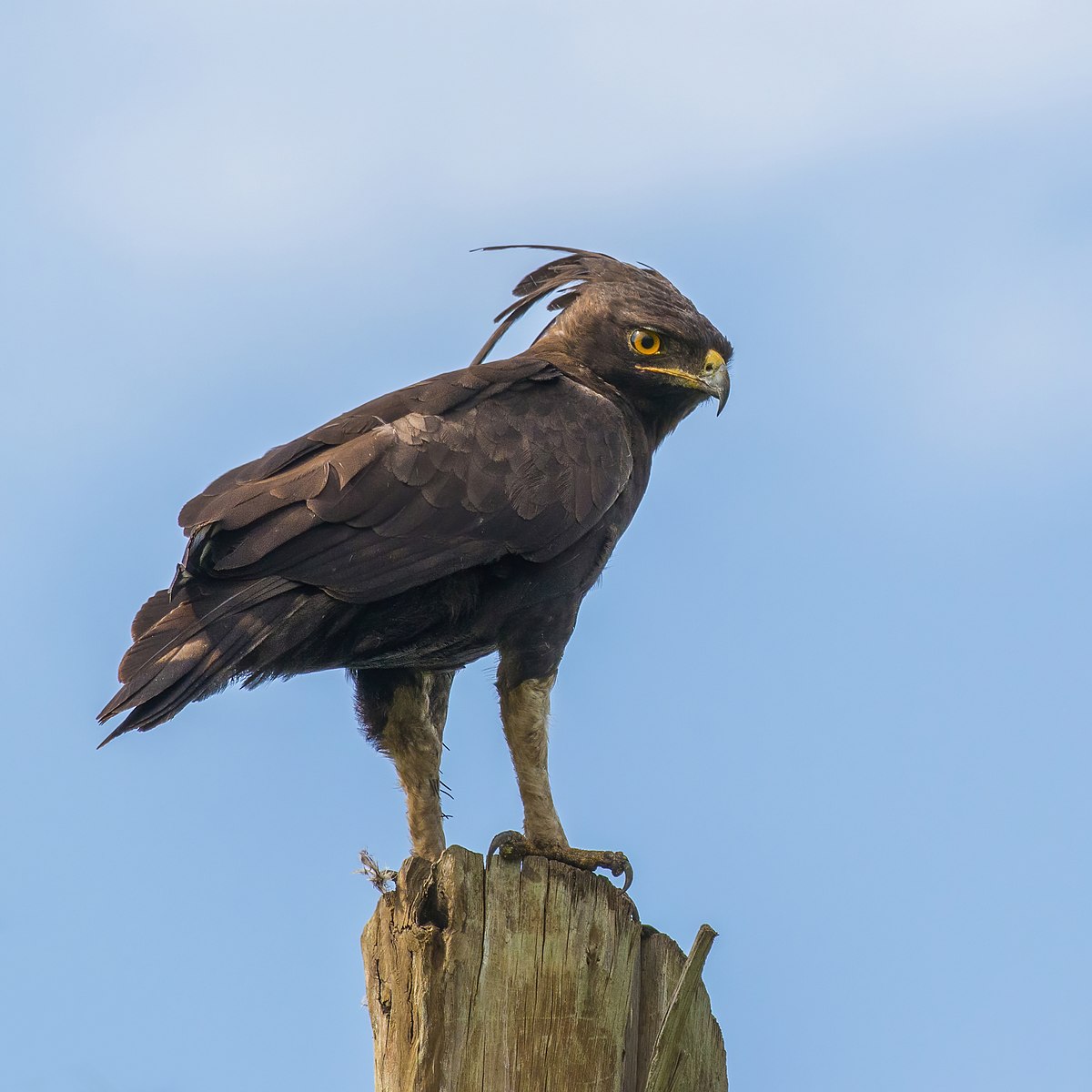The crested eagle (Morphnus guianensis) is a large Neotropical eagle native to Central and South America, with a wingspan of up to 176 cm (69 inches). This majestic bird is the only member of the genus Morphnus and can grow up to 89 cm (35 inches) in length, weighing up to 3 kg (6.6 lb).
The Crested Eagle’s Impressive Wingspan
The crested eagle’s wingspan is truly remarkable, measuring up to 176 cm (69 inches) from tip to tip. This expansive wingspan allows the bird to soar effortlessly through the skies, using the air currents to conserve energy and cover vast distances.
The crested eagle’s wings are relatively short for its size, but they are broad and rounded, providing the necessary lift and maneuverability. The bird’s long tail, measuring 34 to 43 cm (13 to 17 inches), also plays a crucial role in its flight, helping it to make sharp turns and maintain stability in the air.
Unique Physical Characteristics
 Image source: Long-crested eagle By Charles J. Sharp
Image source: Long-crested eagle By Charles J. Sharp
In addition to its impressive wingspan, the crested eagle has several other distinctive physical features:
- Large Head and Crest: The crested eagle has a large, distinctive head and a prominent feather crest, which gives it a regal and imposing appearance.
- Bare Legs: The crested eagle’s legs are bare, which is an adaptation that helps to reduce the bird’s overall weight and improve its flight efficiency.
- Sizable Tarsus: The crested eagle has a sizable tarsus (the lower part of the leg) that measures 10.3 to 11.2 cm (4.1 to 4.4 inches) in length.
Plumage Variations
The plumage of the crested eagle is somewhat variable, with several different color morphs observed:
- Light Morph: Most adult crested eagles have a light brownish-gray head, back, and chest, a white throat, and a dark spot on the crest and a small dark mask across the eyes.
- Dark Morph: Some crested eagles exhibit a sooty-gray or blackish plumage.
- Juvenile Plumage: Juvenile crested eagles are distinctive, with a white head and chest and a marbled-gray coloration on the back and wings, which turns to a sandy-gray color in the second year of life. Dark morph juveniles are similar but are dark brownish-gray from an early age.
Interspecific Relationship with Harpy Eagles
The crested eagle often overlaps in range with the less scarce Harpy eagle, and there is evidence of an interesting interspecific relationship between the two species. Adult crested eagles have been observed feeding juvenile Harpy eagles while the adult Harpy eagles are away, demonstrating a cooperative and symbiotic relationship between these two apex predators.
Conservation Status
The crested eagle is sparsely distributed throughout its extensive range, but it is listed as Least Concern on the IUCN Red List. However, the species faces threats from habitat fragmentation, habitat loss, and other human-related activities, which can impact its population and long-term survival.
In conclusion, the crested eagle is a truly remarkable bird, with its impressive wingspan and unique physical characteristics. Its interspecific relationship with the Harpy eagle and its conservation status are also fascinating aspects of this species. As we continue to learn more about the crested eagle, we can better understand and appreciate the diversity and complexity of the natural world.

